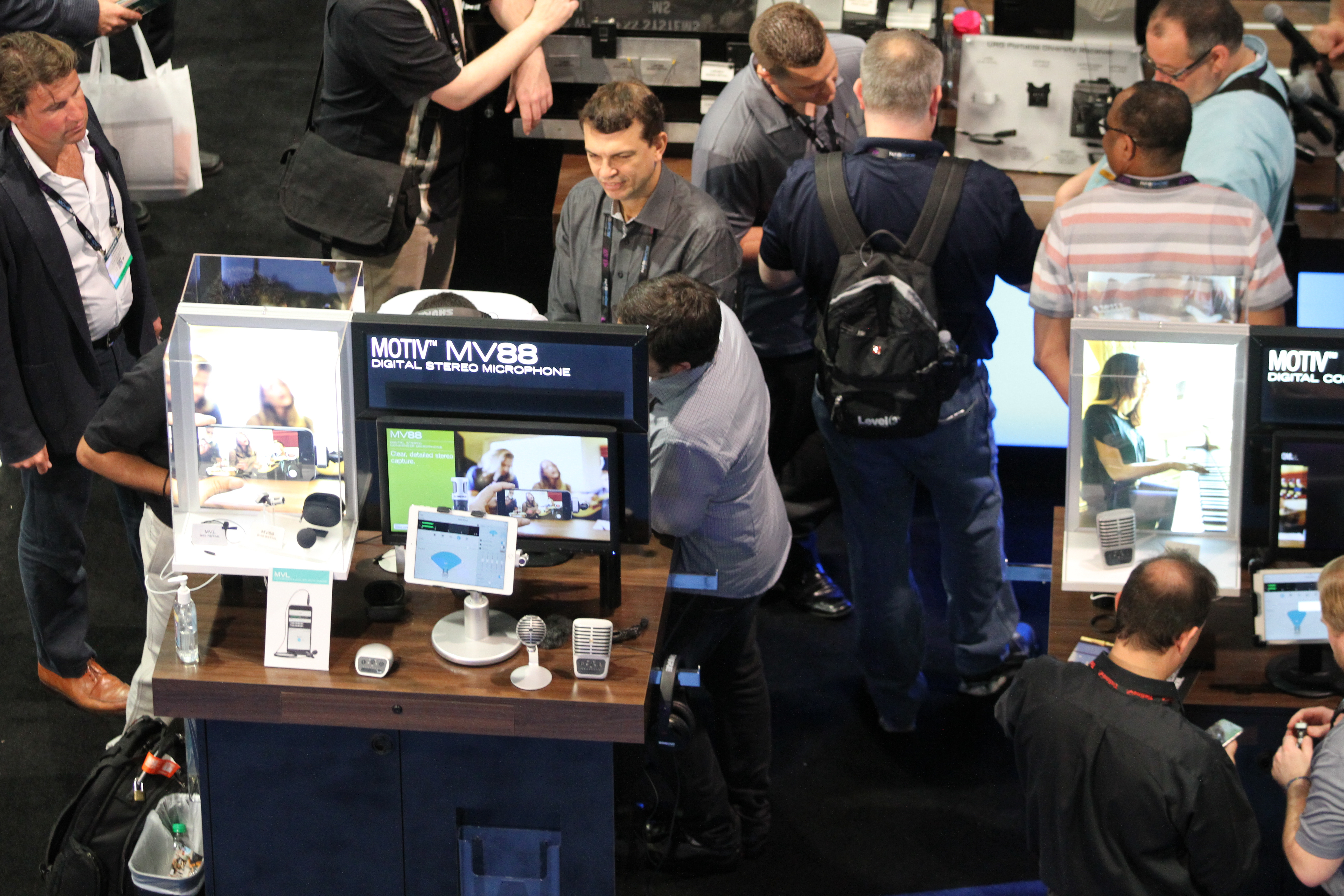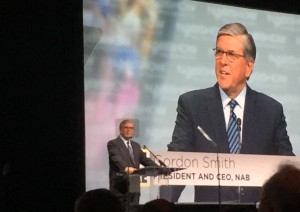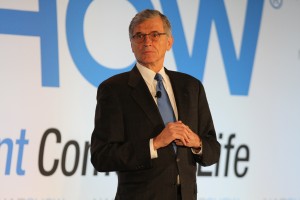Last week, 100,000 broadcast radio and television industry shapers from 150 countries gathered in Las Vegas for the 2015 NAB Show, the world’s largest electronic media show. Perennially, the event has been the host of the latest technology surrounding broadcast media and journalism attracting brands such as CBS, Apple, HP, Samsung and, of course, Antennas Direct.
More than just passively attending, we love being a part of the show and learning about the future of television from some of the best minds in broadcast. Here are some of our biggest takeaways.
-
- There’s (still) no better journalism than broadcast news.
“Broadcasters are more relevant, vital and trusted than ever,” said Gordon Smith, president of the NAB who also challenged show-goers to imagine a world without free over-the-air television. “In times of emergency, while other media may crash and fail, local television is there to connect the community.”
Broadcasters also continue to innovate how they deliver content to the community. Bart Feder, senior vice president of Tribune Media, pointed out that his stations are facing greater realities about how media is consumed, and they are taking steps to meet the demand.
“The reality is that people turn on Facebook before they turn on their TV,” said Feder. “We are the second screen in the two-screen household. The onus is on us to call the audience back. We need authenticity and a way to give the news greater context and meaning.”
-
- FCC Chairman Tom Wheeler is a fan of free, broadcast TV.
While it may come as a shock to some in the industry, Tom Wheeler, chairman of the Federal Communications Commission (FCC), is a big fan of over-the-air television. In his opening remarks on the second day of the NAB Show, Wheeler recounted the story of installing an indoor, flat panel digital antenna in his daughter’s home. He said she was floored when she realized she could get her favorite shows in high definition for free.
“Broadcast is an important part of our lives. And over-the-air provides our uniquely diverse communities with a shared experience,” he said. “With the high cost of cable bundles, consumers are perusing alternatives. One alternative they are perusing is broadcast TV. The number of households relying on over-the-air exclusively went up last year. We also see a growing number of people cutting the cord and pairing an over-the-air antenna with OTT services.”
-
- The broadcast incentive auction is happening in 2016 (after five years of talking).
For several years, the FCC has been working on a plan to auction a portion of the broadcast spectrum to wireless providers. And, though it has been a long time in the making, there appears to be an end in sight. By Spring of 2016, television broadcasters will have the option to offer their spectrum for the auction. This means they may have to do a “repacking” of their broadcast. Wheeler says this is a “once in a lifetime” opportunity for broadcasters and the auction will yield the greatest value for their spectrum.
What does this mean to fans of broadcast television from a viewer perspective? That remains to be seen. There are still some unanswered questions for the FCC and pending lawsuits. However, there is a potential for more broadcasters engaging in “channel sharing” and switching to a VHF frequency.
What is known is this auction is yet another business decision broadcasters need to make within the next several months to better meet the shifting demands of media consumption.
-
- We have seen the future. And it was from a drone camera.
On perhaps a lighter note, the future of broadcast television will involve drones. The NAB Show featured an entire display and several vendors allowed engineers to try out the drone capabilities. As the technology stands, the drone will not replace the traffic helicopter, but it can add a degree of storytelling enhancement to broadcast news.
The FAA has yet to create a final list of rules regarding the safe use of drones and the companies who are licensed to pilot them are very few. However, with the fast scalability of the technology, most industry experts predict the drone coverage and usage will be an integrated part of storytelling by the next NAB Show.
-
- Future for broadcasters includes deep investments in IT.
A broadcaster’s programming used to be simpler. You would create video for television consumption and this would be your single outlet. However, broadcasters now distribute content to websites, social media, Roku players, and mobile apps. And currently most internal workflows do not allow this to be managed in an efficient way.
However, Disney Corporation, which encompasses ABC, ESPN and seemingly most of the known world, has switched to an IP (Internet Protocol) format for their content. Currently, they are transitioning to a real-time distribute digital video to 150 different outlets. You can see the full panel discussion here.
Broadcasters face a lot of challenges to both their bottom line and their business models in the next year. And despite all of it, they are steadfast in their desire to provide free, over-the-air, high-definition television. Stay tuned as we create new ways to make more consumers aware of the choices they have to receive the best entertainment and news without a hefty cable bill.


